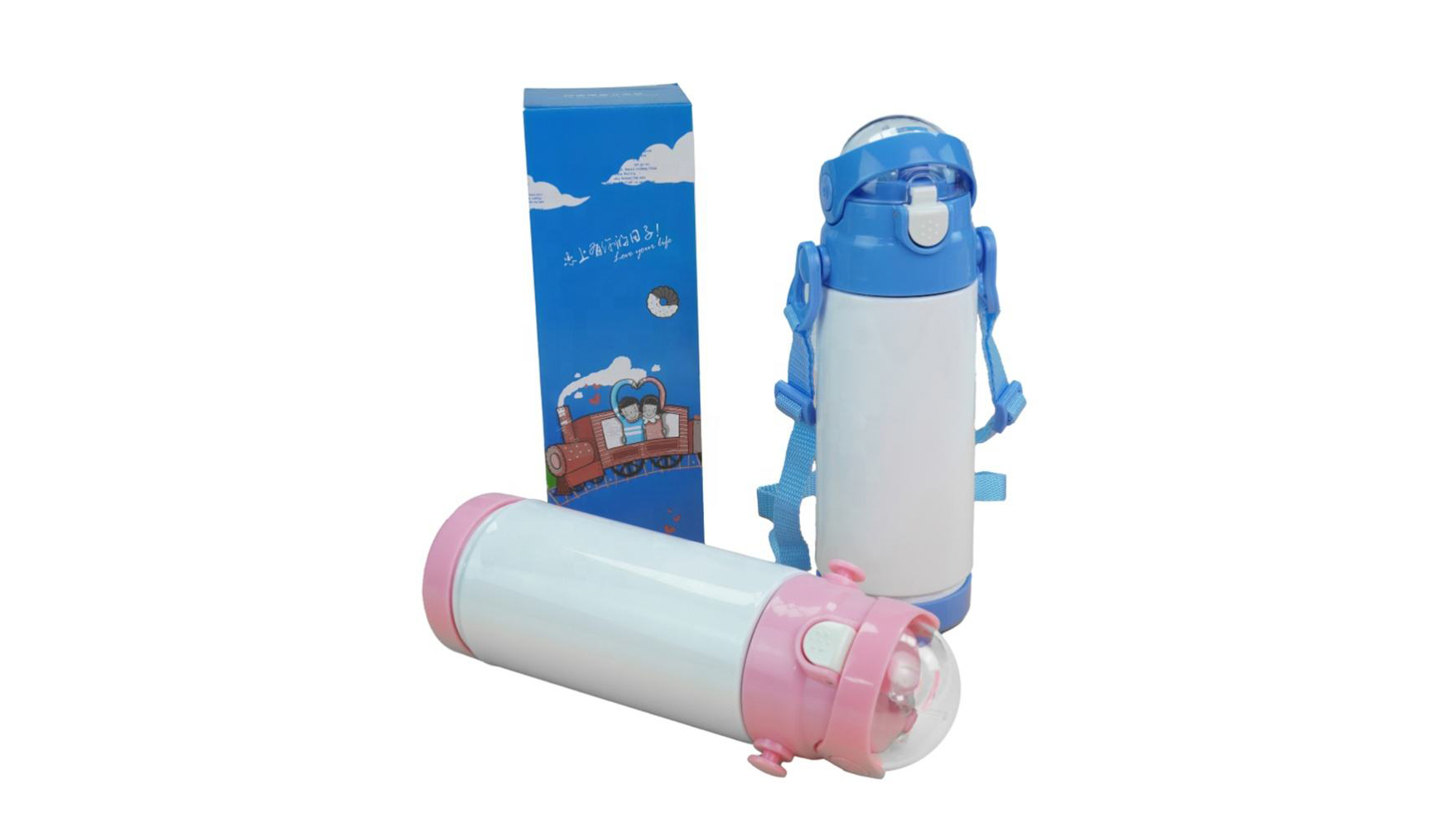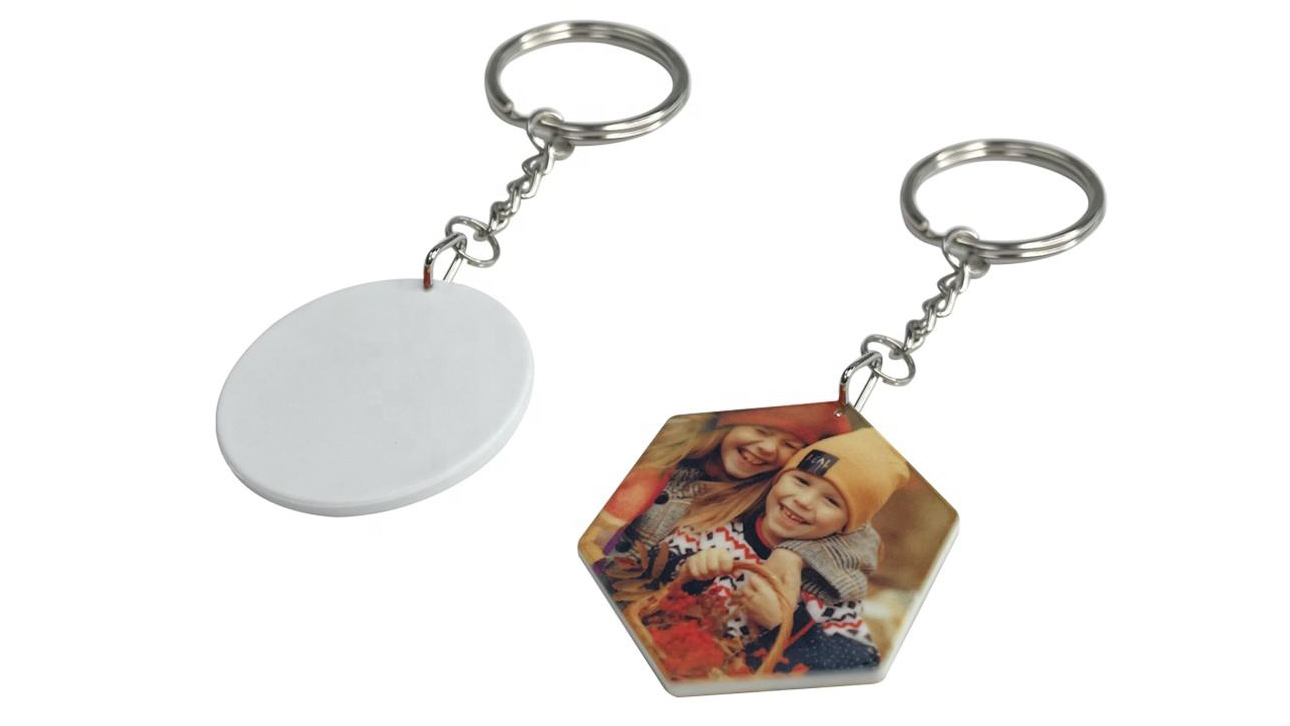
You get the best results with dye sublimation on water bottles, acrylic keychains, tumblers, custom phone cases, ID badges, ornaments, mugs, and lunchboxes. Polyester-based or polymer-coated plastics work best for dye sublimation. When working with sublimation plastic products, choose white or bright blanks for bold colors. These plastics are ideal for creating custom items. Dye sublimation enhances sublimation plastic products like water bottles and tumblers, making them look special. Customizing with dye sublimation offers many options for unique gifts and products.
Key Takeaways
Pick polyester-based or polymer-coated plastics for sublimation printing. These plastics hold ink well. They make images bright and last a long time.
Use white or bright blanks to help your colors stand out. Sublimation inks do not have white pigment. The blank’s color shows through the ink.
Always clean your plastic blanks before you print. This helps the ink stick better. It also stops faded colors or bad sticking.
Test your blanks with the right paper, ink, and heat. This stops warping, melting, or dull prints. Write down what works to get better results.
Choose blanks made for sublimation, like water bottles, tumblers, keychains, mugs, and photo panels. These help you make special and strong custom items.
Productos de plástico de sublimación

Polyester-Based Plastics
Polyester-based plastics are great for dye sublimation printing. These plastics have a special structure that works well with sublimation inks. When you heat them, the ink turns into gas and goes into the plastic. This makes the images bright and helps them last a long time. Polyester-based sublimation plastic products do not fade easily. They can handle the high heat needed for dye sublimation. You often see these plastics in water bottles, ID badges, and lunchboxes. Always clean the surface before you start. Cleaning removes dust and helps the ink stick better.
Polymer-Coated Plastics
Polymer-coated plastics are also good for dye sublimation. The coating on these plastics holds the sublimation ink in place. You can put this coating on many kinds of plastics. The smooth coating lets the ink bond during the heat press. You find polymer-coated sublimation plastic products in tumblers, mugs, and ornaments. These items keep colors bright and images clear. For best results, use good transfer paper like Truepix or A-Sub. These papers help the ink move evenly onto the coated surface.
Acrylic and Polycarbonate
Acrylic and polycarbonate plastics are popular for sublimation plastic products. Acrylic is strong and can take high heat. It has a smooth finish that looks nice. You can sublimate on acrylic for one or two minutes with firm pressure. This gives you clear and bright images. Polycarbonate is tough and does not break easily. It also protects against UV light. It works well for dye sublimation if you control the heat and pressure. Both materials let you make custom shapes and sizes. The smooth surface of acrylic helps the ink transfer well. Polycarbonate’s clear look and UV protection keep your designs looking new. After sublimation, let the items cool slowly. Do not use harsh chemicals or water to keep your designs safe.
En blanco de sublimación

When you pick sublimation blanks, you can make many cool things. These blanks are special items for sublimation printing. Using the right blanks gives you bright colors and strong images. The best blanks are made just for this process. Let’s see which plastic blanks are popular and why they work well.
Keychains and Ornaments
Keychains and ornaments are very popular sublimation blanks. They come in lots of shapes and sizes. Acrylic keychains are strong and light. Many stores sell fun keychains for events like graduations or team parties. You can print names, logos, or designs on them. Ornaments are good for holidays or special days. You can hang them on bags, keys, or trees.
Acrylic keychains and ornaments are:
Simple to decorate with sublimation.
Great for gifts and business items.
Sold in big packs because many people want them.
Good for personal or business use.
Tip: Always pick sublimation blanks made for this process. They have a special coating to hold ink and keep colors bright.
Water Bottles and Tumblers
Water bottles and tumblers are top picks for sublimation. You see them at school, work, and home. Plastic water bottles and tumblers let you add names or art. Custom tumblers are nice gifts and help people remember your brand. You can use bright colors and bold designs on water bottles.
Water bottles and tumblers:
Come in many shapes and sizes.
Are easy to carry and use every day.
Have lots of space for printing.
Stay bright if you use good blanks.
You get the best results with bottles and tumblers made for sublimation. These blanks do not fade and keep your images looking new. Many people use them for sports, schools, and businesses.
Mugs and Lunchboxes
Sublimation mugs and lunchboxes are classic custom gifts. You can print photos, quotes, or logos on them. Sublimation mugs work well because they have a special coating. Lunchboxes for sublimation are strong and easy to clean.
Sublimation mugs:
Keep colors bright after many washes.
Are great gifts for birthdays, holidays, or work events.
Come in different sizes and styles.
Lunchboxes:
Show off your designs in a fun way.
Are good for kids and adults.
Stay strong even with daily use.
Note: Always check that your mugs and lunchboxes are real sublimation blanks. This helps your prints last longer and look better.
Photo Panels and Nightlights
Photo panels and nightlights are a cool way to show pictures. Acrylic photo panels let you print family photos or art. Nightlights with sublimation panels make any room special. Modern acrylic and electroluminescent panels work well for sublimation. They keep your images clear and bright.
Photo panels:
Look professional when finished.
Last for years if you take care of them.
Are good for wall art or signs.
Nightlights:
Use thin acrylic or special panels for printing.
Make nice gifts for kids or home décor.
Studies show photo panels and nightlights made for sublimation can last years. The blank’s quality and the printing steps both matter. If you use good blanks and follow the right steps, your prints stay bright and strong.
Sublimation Blank | Features | Common Uses |
|---|---|---|
Keychains & Ornaments | Light, easy to decorate | Gifts, events, décor |
Botellas de agua | Tough, big print space | Sports, schools, branding |
Tumblers | Insulated, simple to personalize | Gifts, daily use |
Tazas | Coated, safe for dishwashers | Gifts, events, offices |
Lunchboxes | Strong, easy to wash | Kids, work, custom gifts |
Photo Panels | Look pro, last long | Wall art, signs |
Nightlights | Acrylic, bright prints | Home décor, gifts |
Remember: Always use blanks made for sublimation. This helps your designs look good and last longer.
Sublimation Surfaces
White and Bright Plastics
When you choose sublimation surfaces, the color of your blank matters a lot. White and bright plastics give you the most vibrant results. Sublimation inks do not have white pigment. The blank’s color fills in the white or light areas of your design. If you use a dark blank, your colors will look dull or even disappear.
Sublimation works best on white or light-colored plastics.
The base color of your blank affects how bright and accurate your final print looks.
White or bright polymer-coated plastics help you get photorealistic images.
Polyester or polymer-coated materials are the top choices for sublimation surfaces.
You can see the difference when you print the same design on a white blank and a colored blank. The white blank makes every color pop. The colored blank changes the look of your design. You want to pick white or bright blanks for the best results.
Tip: Always check that your blanks are made for sublimation. The right coating and color make your prints last longer and look better.
Clear Acrylic Considerations
Clear acrylic is a popular choice for sublimation surfaces, but it has some special rules. When you print on clear acrylic, you do not get a white background. Any white parts in your design will show up as clear. This can make some designs hard to see, especially if you want bold whites.
Sublimation printing does not add white ink, so clear acrylic will not show white areas.
Designs with lots of white or light colors may look faded or transparent.
Clear acrylic works well for layered or see-through effects.
If you want your design to stand out on clear acrylic, use bold, dark colors. You can also add a white backing after printing to help your design show up better.
Note: Always test your design on a small piece of clear acrylic before making a full batch. This helps you avoid surprises and get the look you want.
Sublimation on Plastic
Identifying Suitable Blanks
Pick the right sublimation blanks for good results. Check if the blanks have a polyester base or a polymer coating. These surfaces help the sublimation inks stick during transfers. Look for blanks marked as “sublimation ready” or “sublimation blanks.” This means they are made for dye sublimation printing.
Check the surface of each blank. Smooth, white, or bright blanks give you the brightest colors. Do not use blanks with rough or dark surfaces. These can make your designs look faded. Good suppliers will say if their blanks work for sublimation on plastic. Ask for details or samples if you are not sure.
Tip: Always read reviews and check ratings before you buy blanks. Trusted suppliers help you avoid bad transfers and poor results.
Sourcing and Testing
When you buy blanks for sublimation on plastic, choose suppliers who know about dye sublimation products. They usually have blanks that work well with sublimation inks, sublimation paper, and a dye sublimation printer. Order a small batch first to test the blanks before making many items.
To test, print a simple design with your dye sublimation printer and sublimation paper. Press the transfer onto the blank using the right time and temperature. See if the sublimation ink moves evenly and if the colors look bright. If you see fading or the ink does not stick, try a different blank or change your process.
Keep a log of your tests. Write down which blanks, sublimation paper, and transfers give you the best results. This helps you get better at customizing and avoid mistakes later.
Step | What to Do |
|---|---|
Source | Buy blanks from trusted suppliers |
Test | Use dye sublimation printer & paper |
Evaluate | Check color, adhesion, and finish |
Record | Keep notes on each blank and result |
Note: Always use the same sublimation inks and sublimation paper for your tests. This keeps your results the same and helps you find the best blanks for sublimation on plastic.
Plastic Blanks: Challenges
Warping and Melting
You may notice that some plastic blanks warp or melt during sublimation. This happens when the heat press gets too hot or you press for too long. Each type of plastic has a different heat tolerance. If you use too much heat, the blank can lose its shape or even stick to the press.
Always check the recommended temperature for your blanks.
Use a timer to avoid overheating.
Place a protective sheet between the press and the blank.
Tip: Start with a lower temperature and short press time. Increase slowly until you see the best results. If you see warping, lower the heat or shorten the time.
Color and Adhesion Issues
Sometimes, colors look faded or the design does not stick well to the plastic blanks. This can happen if the blank does not have the right coating or if the surface is dirty. Using the wrong sublimation paper or ink can also cause problems.
Clean each blank with a lint-free cloth before printing.
Make sure you use blanks made for sublimation.
Check that your ink and paper match your printer and blanks.
If you see dull colors or poor adhesion, try these steps:
Test a small area first.
Adjust the heat and pressure settings.
Use only high-quality blanks and supplies.
Problem | Solution |
|---|---|
Faded colors | Use white or bright blanks |
Poor adhesion | Clean surface, check coating |
Warping | Lower heat, reduce press time |
Note: Keeping a log of your settings and results helps you find what works best for each type of blank.
Now you know which plastics are best for sublimation. Pick polyester-based or polymer-coated blanks for bright prints. Many people like to use water bottles as custom gifts. You can use water bottles for sports teams or school events too. Water bottles with a white base make colors look bright. Acrylic water bottles look modern and stylish. Try water bottles with handles to carry them easily. Wide-mouth water bottles are easy to clean. Some water bottles have built-in straws for more options.
Recommended Plastic Products |
|---|
Water bottles |
Acrylic keychains |
Tumblers |
Phone cases |
ID badges |
Ornaments |
Tazas |
Lunchboxes |
Use these tips to get great results with water bottles and other blanks. Check out more guides to learn about sublimation printing.
FAQ
What is the best type of plastic for sublimation printing?
You get the best results with polyester-based or polymer-coated plastics. These plastics let the ink bond well during the heat press. Always use blanks made for sublimation printing for bright, lasting images.
Why do I need special sublimation paper for plastic blanks?
Sublimation paper holds the ink and releases it onto the plastic when you use heat. Regular paper does not work the same way. You need sublimation paper to get sharp, colorful prints on your plastic items.
How do I stop my plastic blanks from warping during sublimation?
Set your heat press to the right temperature for your blank. Use a timer to avoid overheating. Place a protective sheet between the press and the blank. Test with a small piece first to find the best settings for your sublimation paper and plastic.
Can I use any printer for sublimation on plastic?
No, you need a printer made for sublimation. These printers use special inks that turn into gas with heat. When you use sublimation paper, the ink transfers smoothly onto the plastic. Regular printers and inks will not work for this process.
Tip: Always use the same brand of sublimation paper and ink for the best results. This helps you avoid color changes and poor transfers.

